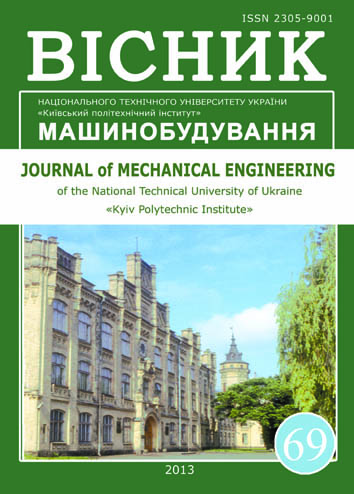RESEARCH DIVISION OF TUNGSTEN CARBIDE AND COBALT AS A RESULT OF MICROBIOLOGICAL WASTE DESTRUCTION OF TUNGSTENCOBALT WASTE
DOI:
https://doi.org/10.20535/2305-9001.2013.69.29004Keywords:
microbiological degradation, carbide waste, cobalt, tungsten carbide, nanopowderAbstract
Purpose. Description of the method of processing hard alloy tungsten-cobalt waste to produce output alloy components - tungsten carbide and cobalt.
Design/methodology/approach. Method for processing of waste solid carbide alloys by a method of microbiological degradation is selective dissolution of metals in the acidic environment at pH< 4 bacterial solution of ferric sulfate performs the functions of the dispersive liquid, solvent, oxidizer, and which is the habitat of autotrophic bacteria Thiobacillus ferrooxidans with the transition tungsten carbide within the insoluble precipitate and translation of a binder in a solution. Cobalt restored to metal hydrazine facial hydrate, preliminary having besieged iron water solution of ammonia at pH 5.0.
Findings. Microbiological method of processing tungsten-cobalt waste to produce output tungsten carbide and cobalt opens the possibility not only to reduce the cost of obtaining metals and increase raw material resources at the expense of production wastes. Developed experimental technique, consisting of three stages. The purity of the obtained powder cobalt - 89,8 %, tungsten carbide - 95,2 %, and its fractional dimension is within 7 nm - 1.5 mkm.
Originality/value. The considered method can be widely used for recycling tungsten-cobalt waste and production of nanomaterials.
References
Chayka T.V., Derbasova N.M. Processing of hard-alloy products by biological leaching. Collection of scientific works SNUNEI. Sevastopol: SNUNEI, 2012. Vol. 4 (44). P.194 - 200.
Arkadiev Z.A., Bezborodov A. M., Blokhin I.N.; Ed. by N. S. Egorova. Industrial Microbiology: teaching aid. Moscow: Vysshaya SHKOLA, 1989. 688 p.
Baranov G. A,. Gavrish M.V., Danilchenko S.N. Study of the properties of tungsten carbide powders, obtained from wastes of tungsten-cobalt group VK by bacterial lea ching. Collection of scientific works SNUNEI. Sevastopol: SNUNEI, 2012. Vol. 2 (42). P.88 - 94.
Kasitskya L.V., Pavlova А.Н., Lapova T.V. Laboratory of analytical chemistry. Tomsk: Izd. state architect. builds. University, 2006. 82 p.
Pyatnitsky I.V. Analytical chemistry of cobalt Monograph. Moscow, Nauka, 1965. 261 p.
Kang-Min Kim, Jong-Heun Lee Seon-Mi Yoon, Hyun-Chul Lee, Yong-Kyun Lee, Jae-Young Choi. Preparation of monodisperse Ni powders via the reduction of hydrazine complexes: The effect of source materials and impurities. Electroceramics, 2006, Volume 17, Issue 2-4 , P. 339-343.
Kuzyakina T.I., Haynasova I.E., Levenets O. O. Biotechnology of extraction of metals from sulfide ores. Vestnik KRAUNC. Of earth science. Petropavlovsk-Kamchatsky, 2008. Vol. 12. No. 2. P. 76-86.

